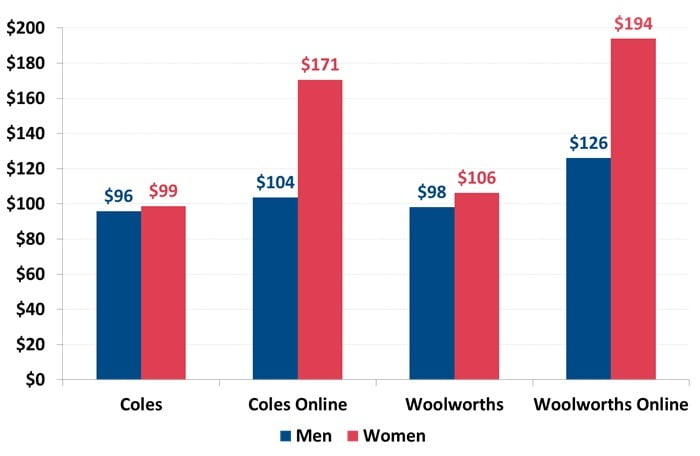Australians who shop for groceries online spend more than shoppers at bricks-and-mortar stores, Roy Morgan has found.
Although online grocery shoppers remain a small minority – for now – they’re a lucrative one for both Coles and Woolworths.
This is the finding of Roy Morgan’s latest report ‘People who have Purchased Groceries Online – Profile’.
Woolworths
In the case of Woolworths, the difference is particularly striking. In 2018, grocery shoppers who bought groceries from Woolworths Online spent an average of $186 a week. By contrast, those who bought from Woolworths bricks-and-mortar stores spent just $103.
According to Roy Morgan, this huge difference is driven by women, who spend far more on average via the online outlet than via the physical store. Women who buy groceries from Woolworths Online spend an average of $194 a week. This figure compares with just $106 for women who buy groceries from a physical outlet.
The same pattern is true for men, but at a much lower rate. Australian men buying groceries from Woolworths Online spend an average of $126 a week. In contrast, men who buy groceries from physical Woolworths stores spend $98 a week.
Coles
Coles shoppers follow the same trend. Online shoppers spend an average of $158 a week, compared with $97 for their online counterparts.
Once again, women spend more at Coles than men do. Women who shop for groceries at Coles Online spend an average of $171 per week. This is much higher than $104 spent on average by men.
 ‘Stunning results’
‘Stunning results’
Roy Morgan CEO Michele Levine says online grocery shopping has been slow to take off in Australia. In fact, just four per cent of grocery shoppers buy their groceries online in an average month. But do their higher spending rates vindicate supermarkets’ investment in online portals?
“These stunning results show that some consumers are more than willing to pay for the convenience of online shopping,” Ms Levine said. “They also suggest consumers are willing to place larger orders than they would in-store, given they will have the goods delivered to their doors.
“Another key takeout … is that the extra online grocery spending is primarily driven by women. While women do spend at a greater weekly average when shopping in-store, the difference is marginal.
“It appears that the biggest beneficiaries of a shift to buying groceries online will be retailers who look set to drive greater revenue per customer from online grocery sales.”


